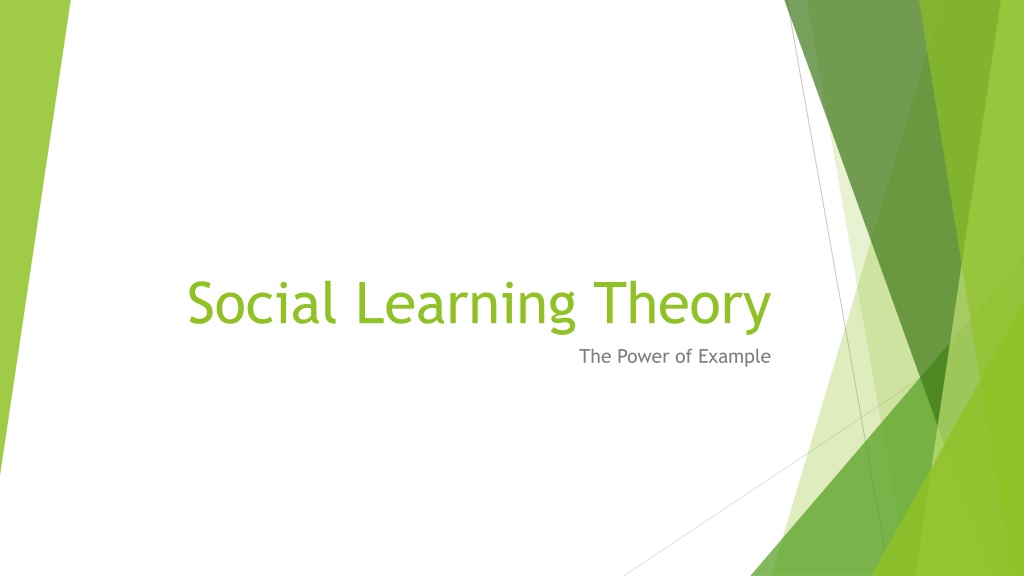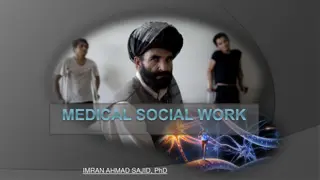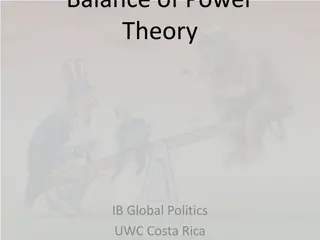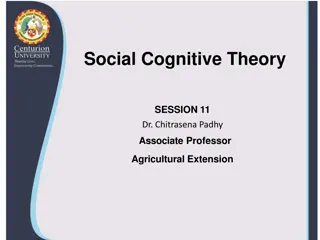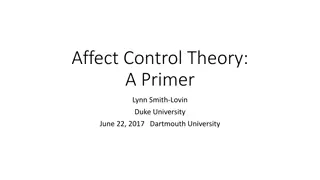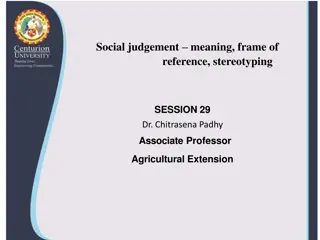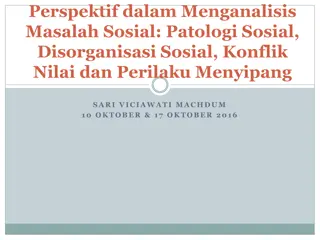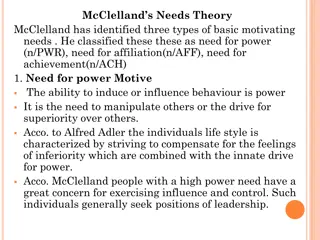Understanding Social Learning Theory and the Power of Example
Social Learning Theory, introduced by Bandura, emphasizes learning through observation and modeling. It explores how individuals acquire behavioral dispositions, trial-and-error experiences, and the impact of stimuli in the environment. The theory focuses on the importance of attention, retention, and motivation in the learning process. The Bobo Doll Study exemplifies how individuals imitate behaviors they observe, showcasing the theory's applicability in real-world scenarios.
Download Presentation

Please find below an Image/Link to download the presentation.
The content on the website is provided AS IS for your information and personal use only. It may not be sold, licensed, or shared on other websites without obtaining consent from the author. Download presentation by click this link. If you encounter any issues during the download, it is possible that the publisher has removed the file from their server.
E N D
Presentation Transcript
Social Learning Theory The Power of Example
Acquired Behavioral Dispositions Trial and error experience Perception of the object Observation of another s orientation to the object Modeling Exhortation Instruction about the object
Social Learning Theory Bandura s major premise is that we learn by observing others Theory used to explain media effects the attitudes, emotional responses and new styles of conduct acquired through filmed and televised modeling
Social Learning Theory Causal link between television violence and actual physical harm to another person Stimulus in the environment Necessary conditions Response behavior
Social Learning Theory Three necessary conditions Attention Retention Motivation
Attention Characteristics of the stimulus that arouse the observer Simple easy to understand Distinctive stands out from routine behavior Prevalent part of everyday life Useful presented as a strategy for life Positive rewarding by association
Retention Once stimulus comes into actor s conscious awareness, it must be stored for immediate or later recall. May be stored as a visual image and/or verbal code Fantasy rehearsal in the actor s mind keeps the stimulus a live option for the future.
Motivation Expectations for future rewards and/or punishments Subject s internal rewards/punishments Subject s external rewards/punishments Vicarious rewards/punishments
Bobo Doll Study What behaviors did the model perform? What behaviors did the subjects seem to imitate? What were the novel behaviors? What do you think about the conclusions of the study?
Critiques Positive but weak causal relationship exists between media violence and behavior Instigation theorists say arousal not imitation BUT does not account for future enactment of modeled behavior Media apologists invoke catharsis theory BUT no evidence
Dependent Variables Self efficacy a person s belief in their capability to successfully perform a task. Measure confidence in one s ability to perform elements of the modeled behavior. Self regulation the process by which learners direct their cognitions, motivation and behaviors to the attainment of their goals. Measure willingness to perform elements of the modeled behavior.
Independent Variables Attention processes Retention processes NEED OPERATIONAL DEFINITIONS
Operational Definition Indicates the precise concrete or physical steps the researcher will take in order to identify the variable. Focus on what can be OBSERVED and/or COUNTED.
ACTIVITY If using Social Learning Theory, write Operational definitions for independent variable Research questions and/or hypotheses If using Cultivation Theory, decide on specific type of media exposure (i.e., picture, video, advertisement, blog post, song, etc.)
